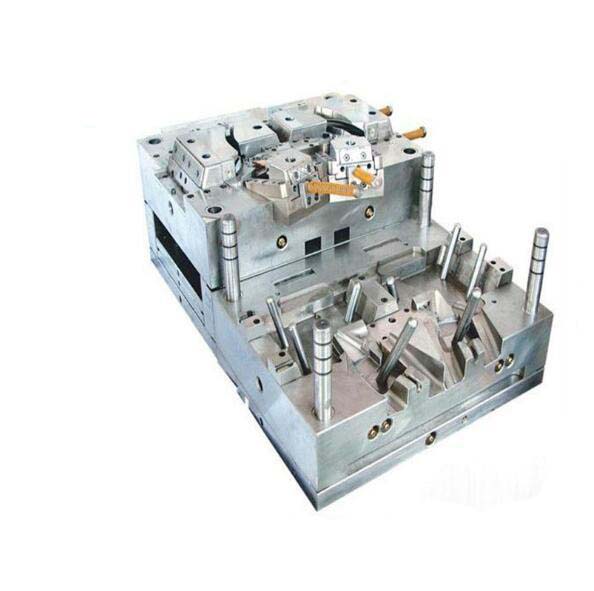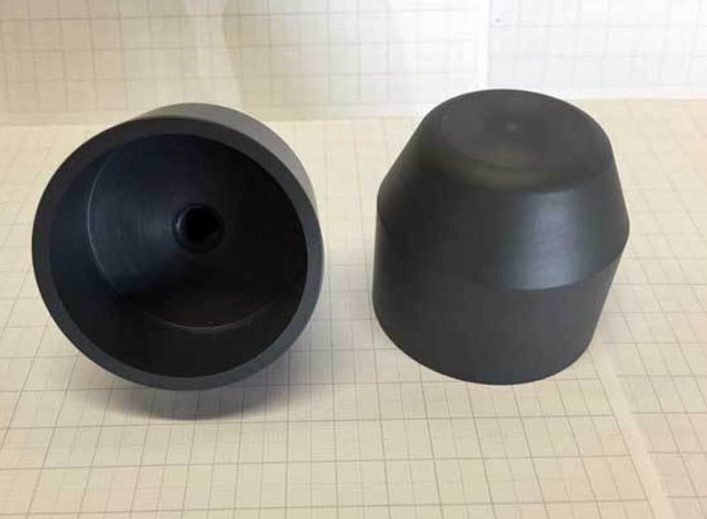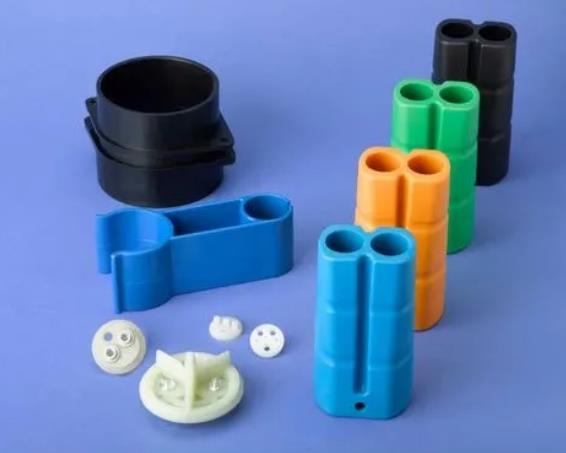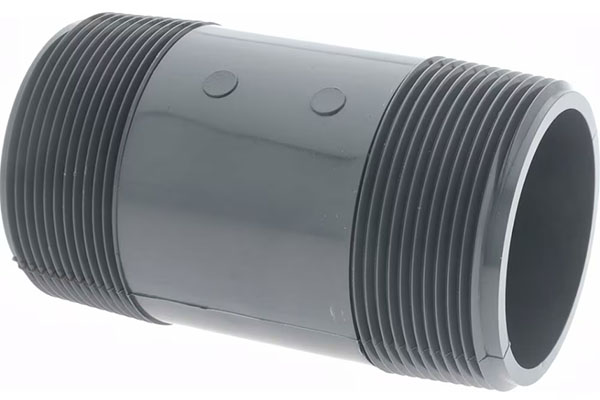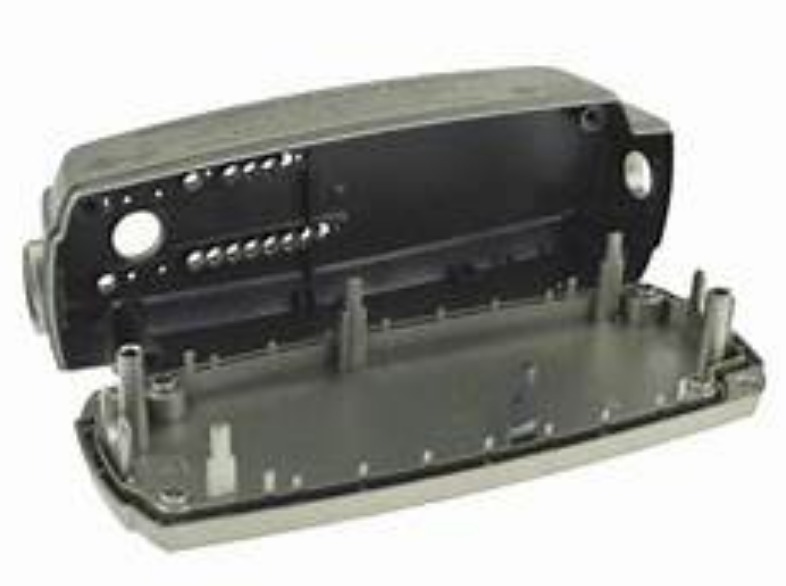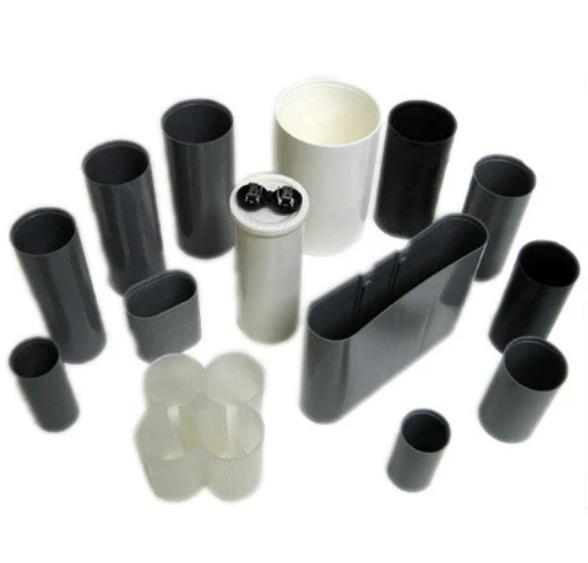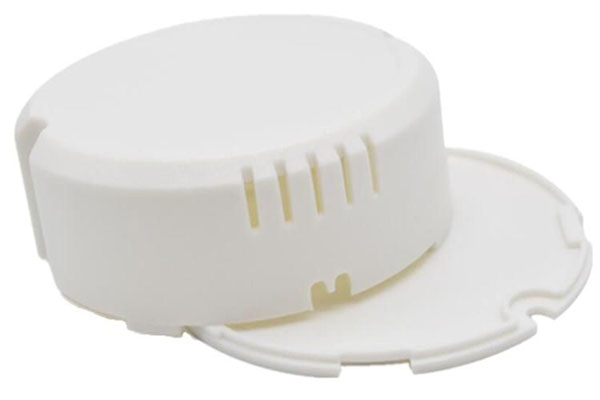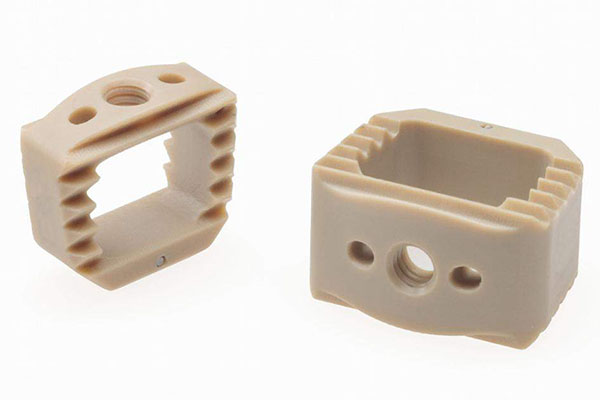What is Clamp Tonnage in Injection Molding?
In injection molding, clamp tonnage is a crucial factor. It refers to the force exerted by the injection molding machine's clamping unit to keep the mold closed during the injection and cooling phases of the molding process. This force is measured in tons, hence the name "clamp tonnage".
During injection molding, molten plastic is injected into the mold cavity at high pressure. Without sufficient clamp tonnage, the high - pressure plastic could force the mold open, resulting in flash (thin, unwanted layers of plastic) around the edges of the mold or incomplete filling of the cavity. For example, imagine a small - scale injection molding operation making plastic toys. If the clamp tonnage is set too low, the molten plastic might seep out between the mold halves, creating a messy and unusable product.
The role of clamp tonnage can be better understood by looking at the steps of the injection molding process. First, when the plastic is injected into the mold, the injection pressure can be quite high, often ranging from 1000 to 20000 psi (pounds per square inch). This high - pressure injection can cause significant forces that try to separate the two halves of the mold. The clamp tonnage counteracts these forces, ensuring that the mold remains tightly closed.
Then, during the cooling phase, as the plastic solidifies, it shrinks. This shrinkage can also put stress on the mold. The clamp tonnage helps to maintain the integrity of the mold and the shape of the part being molded, preventing deformation.
Why is Clamp Tonnage Important?
Ensuring Product Quality
Clamp tonnage plays a pivotal role in guaranteeing product quality. If the clamp tonnage is insufficient, several quality issues can arise. Flash, as mentioned before, is a common problem. When the mold doesn't close tightly due to low clamp tonnage, the molten plastic can leak out between the mold halves, creating thin, unwanted layers of plastic around the edges of the product. This not only affects the appearance of the product but also its functionality. For example, in the production of small plastic gears, flash can interfere with the smooth meshing of the gears.
Short shots or incomplete filling can also occur when the clamp tonnage is too low. The high - pressure injection of plastic into the mold requires a counter - acting force from the clamp to ensure that the plastic fills the entire mold cavity. Without enough clamp tonnage, the plastic may not reach all parts of the mold, leaving voids or unfilled areas in the final product. In the manufacturing of plastic containers, an incomplete fill could result in a container with a thin or missing wall section, making it unusable for its intended purpose.
On the other hand, excessive clamp tonnage can also be detrimental. It can cause over - packing of the plastic in the mold. This leads to increased internal stress within the product. As the plastic cools and solidifies, these internal stresses can cause the product to deform over time. For instance, a flat plastic panel produced with too much clamp tonnage may warp, which is unacceptable for applications where a flat surface is required, such as in display panels.
Protecting Equipment
Proper clamp tonnage is essential for the longevity of both the injection molding machine and the mold. If the clamp tonnage is set too low, the repeated opening and closing of the mold under the force of the injection pressure can cause the mold to wear out prematurely. The constant stress on the mold due to the lack of sufficient clamping force can lead to cracks in the mold surface, misalignment of mold components, and overall degradation of the mold's precision. A damaged mold not only affects product quality but also requires costly repairs or replacement.
For the injection molding machine, an improper clamp tonnage can put excessive stress on the clamping mechanism. This can lead to wear and tear of components such as the tie bars, hydraulic cylinders, and the clamping frame. Over time, this can cause the machine to become less accurate in its clamping force, and in severe cases, it can lead to mechanical failures. For example, if the tie bars are constantly subjected to uneven or excessive stress due to incorrect clamp tonnage settings, they may stretch or break, which can be a major safety hazard and also disrupt production for an extended period while the machine is being repaired.
Conversely, setting the clamp tonnage too high can also damage the equipment. It can over - stress the mold and the machine's clamping system, leading to accelerated wear and potential breakage of components. Additionally, running the machine at a much higher clamp tonnage than necessary consumes more energy, increasing operating costs.
How to Calculate Clamp Tonnage?
Calculating the appropriate clamp tonnage is essential for a successful injection molding process. Incorrect calculations can lead to various issues, as discussed earlier. Here's how you can determine the right clamp tonnage.
The Basic Formula
The fundamental formula for calculating clamp tonnage (\(F\)) is relatively straightforward in concept:\(F = K\times P\times A\)
- \(F\) is the clamp tonnage (measured in tons or other force units, often converted to appropriate engineering units for calculation).
- \(K\) is a safety coefficient. This value is typically in the range of 1 - 1.2. The safety coefficient accounts for unforeseen factors during the injection molding process, such as minor variations in material properties, injection pressure fluctuations, or small inaccuracies in the other parameters. For example, in a production environment where the process is well - controlled, a value of 1 might be sufficient. However, in a more variable or less - predictable setting, a safety coefficient closer to 1.2 is advisable.
- \(P\) represents the average pressure within the mold cavity (measured in megapascals - MPa). This is the pressure exerted by the molten plastic on the inner walls of the mold during injection. The value of \(P\) depends on several factors, including the type of plastic being used, the injection speed, and the complexity of the mold design. For instance, highly viscous plastics like polycarbonate (PC) generally require higher injection pressures, which in turn means a higher \(P\) value in the formula.
- \(A\) is the projected area of the part on the mold parting line (measured in square centimeters - \(cm^{2}\)). This is the two - dimensional area of the part as seen when looking at the mold along the plane where it opens and closes. For a simple rectangular - shaped plastic part, the projected area is just the length times the width of the part's largest face in the plane of the mold parting line.
Factors Affecting the Calculation
Several factors can influence the calculation of clamp tonnage:
- Plastic Material Characteristics: Different plastics have different viscosity levels. Viscous plastics, such as some engineering plastics like polyphenylene sulfide (PPS), require higher injection pressures to flow into the mold cavity. As a result, the mold cavity pressure (\(P\)) in the clamp tonnage formula will be higher for these materials. For example, compared to low - density polyethylene (LDPE) which has a relatively low viscosity and might have a mold cavity pressure of around 10 - 15 MPa during injection, PPS could have a mold cavity pressure in the range of 35 - 40 MPa or even higher, depending on the specific processing conditions.
- Mold Structure: A complex mold with multiple cavities, thin - walled sections, or intricate features will require more precise control of the injection process. These molds often have higher flow resistance for the molten plastic. For instance, a mold with a long and narrow runner system or multiple small - diameter gates will increase the pressure drop as the plastic flows through the mold. This increased resistance means that a higher injection pressure is needed, and consequently, a higher clamp tonnage. Additionally, if the mold has a large projected area due to its design, even with a relatively low - pressure plastic, the overall clamp tonnage required will be significant because of the large value of \(A\) in the formula.
- Injection Speed: Faster injection speeds can increase the pressure exerted on the mold. When plastic is injected rapidly into the mold cavity, it can create a higher - impact force against the mold walls. This higher force can cause the mold to experience greater stress, potentially leading to the need for a higher clamp tonnage. For example, if the injection speed is doubled, the pressure within the mold cavity might increase by 30 - 50% in some cases, which would then require an adjustment in the calculated clamp tonnage to ensure the mold remains closed during the injection process.
Different Clamp Tonnage Requirements for Various Injection Molding Products
The clamp tonnage requirements vary significantly depending on the type of injection - molded product. Here are some examples presented in a tabular form:
| Product Type | Description | Projected Area (\(cm^{2}\)) | Mold Cavity Pressure (\(MPa\)) | Safety Coefficient (\(K\)) | Calculated Clamp Tonnage (tons) |
| Small Precision Parts (e.g., electronic components) | These are usually small - sized parts with high - precision requirements, such as connectors for electronic devices. They often have a complex shape and require tight tolerances. | 5 - 20 | 30 - 40 | 1.2 | Using the formula \(F = K\times P\times A\), for \(A = 10cm^{2}\), \(P = 35MPa\), and \(K = 1.2\), \(F=1.2\times35\times10 = 420\) kgf. Converting to tons (1 ton = 1000 kgf), it's approximately 0.42 tons. |
| Medium - sized Consumer Goods (e.g., plastic toys) | They are of moderate size, with a relatively simple shape compared to precision parts. The requirements for dimensional accuracy are not as strict as those for precision parts. | 50 - 150 | 25 - 30 | 1.1 | For \(A = 100cm^{2}\), \(P = 28MPa\), and \(K = 1.1\), \(F = 1.1\times28\times100=3080\) kgf, which is about 3.08 tons. |
| Large - sized Plastics (e.g., automotive bumpers) | These are large - scale products with a large projected area. They may have thick walls and complex geometries due to functional requirements. | 500 - 2000 | 15 - 25 | 1 | For \(A = 1000cm^{2}\), \(P = 20MPa\), and \(K = 1\), \(F = 1\times20\times1000 = 20000\) kgf, or 20 tons. |
Small precision parts need a relatively high - pressure injection to fill the complex and small - sized mold cavities accurately. Thus, the mold cavity pressure (\(P\)) is on the higher side. Despite their small projected area (\(A\)), the combination of high - pressure and a safety coefficient results in a non - negligible clamp tonnage requirement.
Medium - sized consumer goods, like plastic toys, have a larger projected area compared to small precision parts. The mold cavity pressure is lower because the shape is less complex, and the tolerances can be looser. However, due to the larger area, the overall clamp tonnage needed is still significant.
Large - sized plastics, such as automotive bumpers, have a massive projected area. Although the mold cavity pressure is relatively low because the plastic can flow more easily into the large - scale mold, the large area value in the clamp tonnage formula means that a substantial amount of clamp tonnage is required to keep the mold closed during the injection process.
FAQs about Clamp Tonnage in Injection Molding
How do I know if the clamp tonnage of my injection molding machine is sufficient?
You can start by calculating the required clamp tonnage using the formula \(F = K\times P\times A\), as described earlier. Then, compare this calculated value with the maximum clamp tonnage capacity of your injection molding machine. During the trial runs, closely examine the molded parts for signs of flash (thin, unwanted plastic around the edges), incomplete filling, or warping. If any of these issues occur, it may indicate that the clamp tonnage is insufficient. Additionally, you can measure the actual force exerted by the clamping unit using a force - measuring device to ensure it meets the calculated requirements.
Can I use a lower clamp tonnage than calculated?
It is not advisable to use a lower clamp tonnage than calculated. Using less clamp tonnage can lead to several problems. As mentioned before, it can cause flash, where molten plastic leaks out between the mold halves due to the inability of the clamp to keep the mold tightly closed. This not only affects the appearance of the product but also its functionality. Incomplete filling of the mold cavity may also occur, resulting in defective parts. Moreover, repeated use of insufficient clamp tonnage can cause premature wear and tear of the mold and the injection molding machine, increasing maintenance costs and reducing the lifespan of the equipment.
What are the common mistakes in setting clamp tonnage?
One common mistake is ignoring the safety coefficient in the calculation formula. Omitting or underestimating the safety coefficient (\(K\)) can lead to an inaccurate calculation of the required clamp tonnage, increasing the risk of issues like flash and incomplete filling. Another mistake is not considering changes in the mold or product design. If the mold is modified, for example, to add new features or change the cavity layout, the projected area (\(A\)) and the required injection pressure (\(P\)) may change. Failing to recalculate the clamp tonnage based on these changes can result in improper clamping. Additionally, assuming a constant mold cavity pressure (\(P\)) for different plastic materials is a mistake. As different plastics have different viscosities and flow characteristics, the pressure required to inject them into the mold varies significantly.
Yigu Technology's Perspective
As a non - standard plastic metal products custom supplier, Yigu Technology deeply understands the significance of clamp tonnage in injection molding. In our experience, accurate determination of clamp tonnage is the foundation of high - quality product manufacturing.
We have seen firsthand how incorrect clamp tonnage can lead to a host of product defects, from flash and incomplete fills to warped parts. By precisely calculating and setting the clamp tonnage according to the specific requirements of each project, we ensure that our products meet the strictest quality standards. This not only reduces waste and rework but also significantly improves production efficiency.
Moreover, at Yigu Technology, we constantly invest in research and development to optimize the use of clamp tonnage in different injection molding scenarios. We believe that by staying at the forefront of this technology, we can provide our customers with the best - in - class products and services in the non - standard plastic metal products field.
